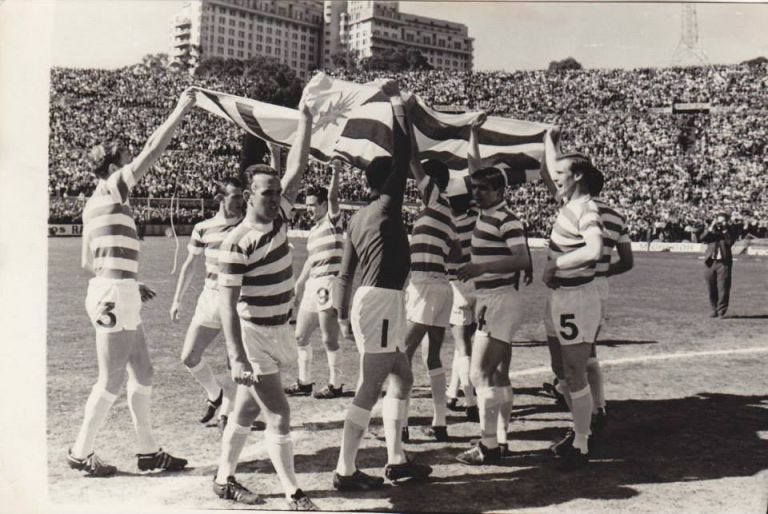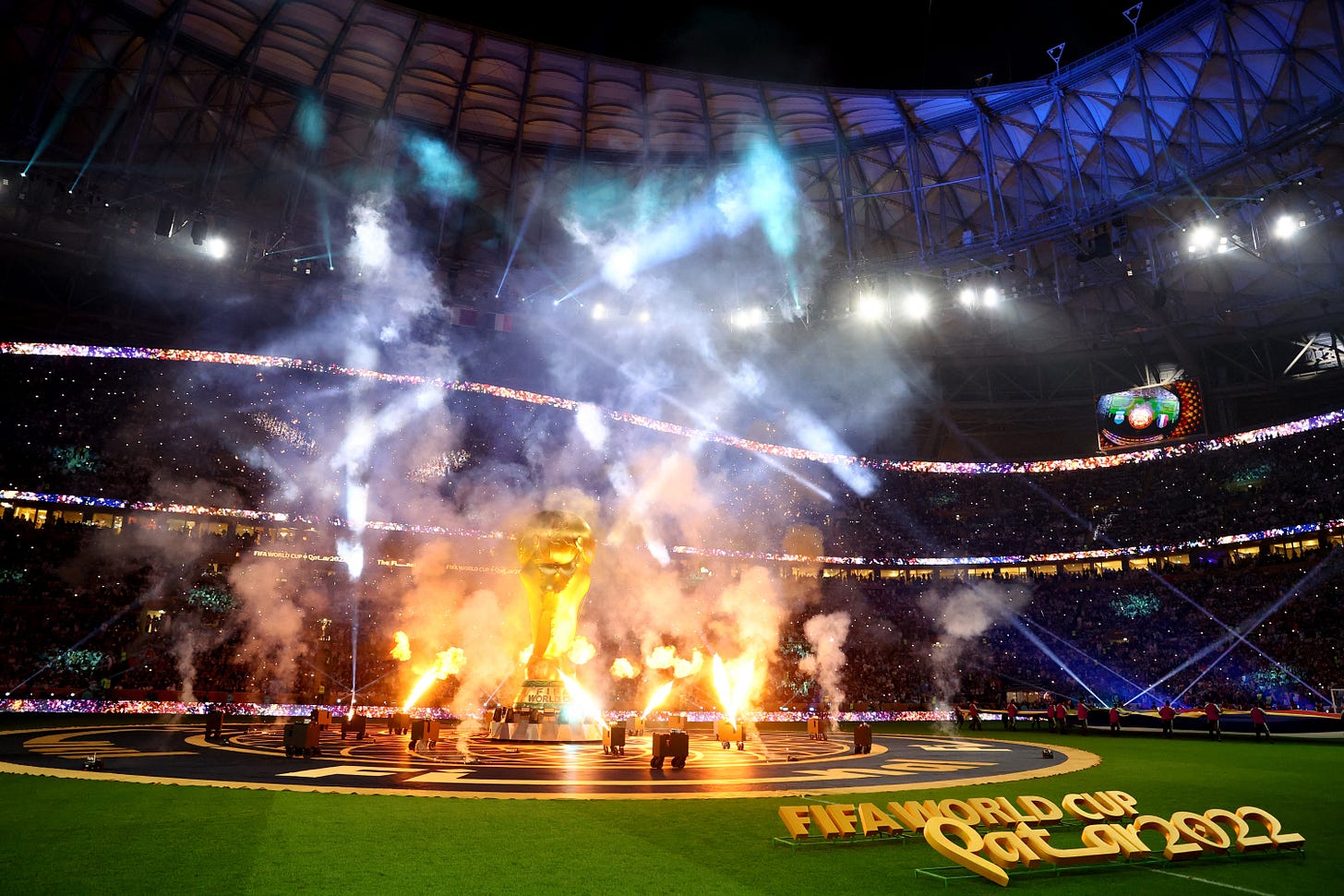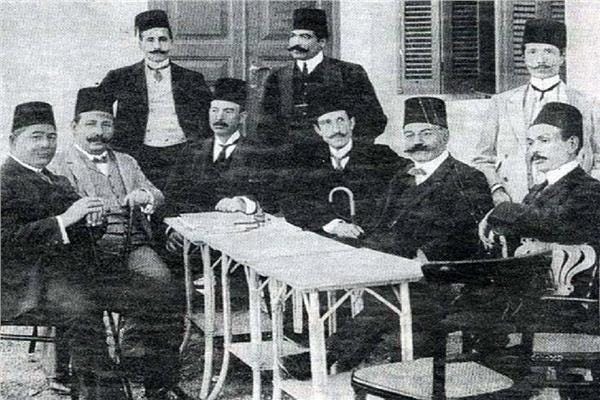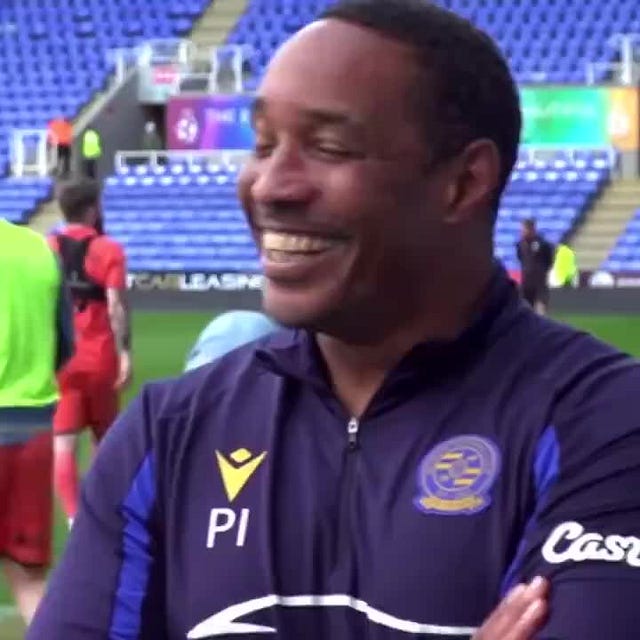At a time when football injuries and the over-saturation of football has reach peak criticism, FIFA decided to announce a Club World Cup where the best club sides around the world will meet in a 32-team tournament to be christened international champion. Technically the title of best club in the world. Most of the contestants earned a place in this exclusive tournament by winning their confederation championship or earning a “ranking pathway”.1 Eight groups of four will be decided through one match against each group opponent, top two with the most points advance. Fairly basic stuff. The much expanded tournament replaces a prior format used from 2004-2024 where UEFA Champions League and CONMEBOL’s Copa Libertadores winners earned passage directly into the semi-finals while other federations like Oceania Football Confederation (OFC), Asian Football Confederation (AFC), Confederation of African Football (CAF), and CONCACAF fought for the remaining spots.2 While much of the English-language football commentary and its hordes of anglo/Euro-philes slagged off the tournament for decades, the tournament holds a special place in the hearts of South Americans through the historical and cultural importance. Like many, I love a Champions League final, but I believe this has the potential to be the best club tournament in the world.
This 2025 revamp to the tournament isn’t a first of its kind. The tournament has taken many forms but in 2004, the tournament transitioned from the old old tournament, to the new old, before the new new debuting in 2025. The FIFA Club World Cup we have known for the last couple decades was once the Ingénue replacing the aging Intercontinental Cup, established in 1960, but its time has come to take a back seat to the future. The conception of the Intercontinental Cup actually predates the Copa Libertadores. The Copa only came about in 1959, four years after the debut of the European Cup to see who would play the Euro Cup winners in the prospective 1960 Intercontinental Cup. After winning five European cups in a row, Real Madrid’s lust for glory scaled to the international stage when they became premier champions of the Cup beating Uruguayan Giants, Club Athletic Peñarol 5-1 over two legs. The two legged format saw European clubs and their fans experience the passionate severity of Latin American football.
After that first iteration of the Cup, South American Clubs won the next three. The 1962, and 1963 editions starred Santos’ Pelé who dazzled by scoring five goals over two legs against Portuguese giants Benfica in 1962.3 It was during these early iterations of the cup where reputations were earned, or sullied. Peñarol got their revenge on Real Madrid by winning the 1966 edition, but after this the competition began to show some bite in terms of increased violence due to the cultural significance of such events.
The Battle of Montevideo as it was know thereafter, was the third match in the 1967 final between Celtic of Glasgow, and Racing Club of Buenos Aires. In honesty, the rivalry between Argentina and Britain goes back to Britain’s 19th and 20th century economic and political dominance over Argentina, but comments made by England’s manager after the 1966 quarter-final victory against Argentina was a fresh wound in the minds of many an Argentine. Alf Ramsey, manger of England referred to the Argentines as “Animals” in the post-match despite England producing 33 fouls to Argentina’s 19 in the quarter-final.4 With their captain being sent off for “violence of the tongue” by a non-spanish speaking official, the game was seen as a massive miscarriage of justice to Argentinians and it would be remembered as such. Incidences in Glasgow and Buenos Aires amplified the tension between the two clubs as they prepared to finish the 2-2 tie in Montevideo, Uruguay, just 240 km from the Argentine capitol.5 Seconds into the match, the general tenor was clear through a violent challenge on Maschio of Racing. Due to the ‘tit for tat’ violent transgressions of the tie, the Scots illustrious reputation after completing a European Treble suffered greatly. So much so, it cost the knighthood of their coach Jock Stein in an event described by some British diplomats as “the unfortunate events in South America.”6 The behavior from both sides resulted in multiple horror challenges, bust-ups, injuries, and sendings off. At a time when red cards were so rare, five in one match was unheard of and thought to be despicable. This flash point highlighting the violence resulted in teams refusing to participate. An act further debasing the competition.

The trend toward abstention from the competition due to violence and lack of prestige prompted changes from football’s governing body. After refusals from Ajax(1971), Bayern Munich(1974), and Nottingham Forrest(1979), FIFA President, Joao Havalange and his cohorts in UEFA and CONMEBOL devised a new structure that would massively reduce the risk of violence and encourage maximum participation. This newfangled tournament captured the economic zeitgeist of a post-1978 World Cup adorned with corporate sponsorships coupled with the incessant push toward economic globalization.7 This new tournament, designed by UEFA and CONMEBOL whilst funded by Toyota included a neutral ground to negate rivalries while attempting to increase the prestige of the tournament.
Despite these innovations, it remained just European and South American teams, completely excluding other confederations. It would not be until the 2005 when all six of the confederations were able to be represented on the global stage.8 This leads us back to our current predicament. If we were to investigate the trends of FIFA and global capitalism at large, the two would mirror each other in their attempts at profit expansion, commodification, and spectacle. FIFA, a non-profit is run like a multinational corporation and Gianni Infantino is its CEO. A very successful one at that. More dollars for FIFA equals more dollars for federations. More dollars for federations equals more votes for Infantino, and the cycle continues.9
In a recent interview with seasoned media personality Colin Cowherd, Infantino spoke about the various goings on of FIFA and its expansions. Something along the lines of “more than 50% increase of teams in the 2026 World Cup” this, “World Cup is 104 Super Bowls in one month” that.10 essentially just hyping it up and they spoke about a Forbes article where it describes percentage increases and blah blah blah about soccer fandom in America. In the article, what stuck out to me was when they described this recent boom indicating soccer as a ‘growth stock’ that “investors should be betting on.” *Game’s Gone*11 While the limits of this economic model were tested by the cartel like merger of elite footballing clubs under the name “European Super League,” the sport continues finds a way to increase profitability. The most recent World Cup in Qatar earned FIFA $7.5 billion in revenue, an increase of a billion than the previous cup in Russia.12 While age-old fans may be disgusted, each of the federations get their share and remain pleased with Infanino. I am absolutely thrilled to see the numbers increase with the introduction of the FIFA half-time show.13
Anti-capitalist rant aside, the opportunities for footballers grow when FIFA adds to its list of international competitions. Women’s World Cup, a good addition. Under-20 World Cup, decent addition. So on and so forth to include Futsal, U-17 World Cup for men and women. Is expanding the FIFA Club World Cup to actually be representative of international football a bad thing? CONMEBOL and UEFA have had their fun being the sole competitors until 2005, then dominating the tournament with automatic semi-final appearances. Despite all the criticism against greedy FIFA and its evil president, I just cannot philosophically be against a more complete and inclusive tournament to decide the best club in the world.
With a little history and perspective behind us, I think we should discuss just a few lesser known tournament participants. Group A’s Al-Ahly of Cairo are amongst the African continents biggest and most successful clubs, winning three AFC titles since the 2020/2021 season.14 With 44 league titles and 12 CAF Champions League wins, they were shoo-ins for the FIFA Club World Cup. Al-Ahly, a group founded in 1907 with the desire to express Egyptian political and cultural unity amongst British colonial rule didn’t start as a football club. Initially it was just a club for intellectuals to discuss or debate ideas in a safe space amongst likeminded individuals. Similar to the Salons of Paris or the coffeehouses of Vienna, but eventually, in 1911 football was introduced allowing the ideals of Egyptian nationalism and patriotism and avenue to proliferate throughout Egyptian society. By 1923, Nadi Al-watanniyah (Club of Patriotism) had won their first trophy against the English backed Dragon.15 The myths and legend around Al-Ahly continued to grow after winning the 1924 Egyptian cup against Al Sekkah Al Hadid, a team formed by British and Italian Engineers in 1903. The victories served as a shining light in the fight against colonialism, even if it was just on the football pitch.
It was not until 1956, when the yoke of British dominance of 74 years was fully dispatched. The exit of the Brits was the result of the successful and bloodless coup led by a core of officers, directed by Abdel Nasser.16 The 1952 revolution saw the abdication of King Farouk I, and applied pressure on British occupancy which dissolved shortly thereafter. Eventually, Nasser came to power and through a plateau of Arab nationalism/socialism, he desired to develop relationships locally, transforming his views of football and molding it into a tool of soft power regionally and globally. Although not a fan of the game himself, seeing the support and dedication of Al-Ahly fans, he acknowledged the social importance of football and saw to the development of an African footballing federation. In 1956-1957, under the leadership of Abdel Aziz Abdallah Salem, the Confederation of African Football (CAF) constitution was written, along with the first African Cup of Nations which was held in Sudan, February of 1957.17 Salem became CAF’s first president and Egypt became premier champions of Africa’s first continental competition. Supporting football served Egypt, Nasser, and Al-Ahly well by establishing themselves as a powerhouse in African football. Anyway, Al-Ahly, huge club with great importance in the realms of Egyptian, Pan-Arabian, and African football.18
Similarly to Al-Ahly’s almost unknown status in the euro-sphere, Urawa Red Diamonds are amongst the biggest clubs in Asia through winning the AFC Champions League three times, whilst only winning one domestic title in 2006. The evolution of the side is indicative and representative of Japanese football as whole. First existing as a semi-pro side who then participated in the Japanese Soccer League (JSL, 1965), and then progressing through the decades to the eventual rebranding of Japanese soccer in the 1990s. Founded by Mitsubishi in 1950 to participate in what is known as Shakaijin Soccer (社会人サッカ).19 Essentially a tournament involving workers of various corporations competing through the medium of football. Teams from various companies battled it out and the players were actual workers of the company. A throwback to the early days of industrial era football that saw employers hire workers with the intention of them kicking the ball in company colors.
The intwined nature of Japanese society and pride of employment meant that this was a natural occurrence. Many other of the J-League’s founding members were early Shakaijin sides. Nine out of ten founding clubs of the J-League were associated with a company, exemplifying the connection and longevity. Kashima Antlers, previously Sumitomo Metal Industries Factory Football Club founded in 1947, are one of Japan’s best teams with a record 8 J-Leagues, and totaling 20 trophies, including an AFC Champions League in 2018. Yokohama F. Marinos still maintain a strong bond with Nissan by playing in Nissan Stadium, and faithfully wearing the company as a shirt sponsor.20 Along with Mitsubishi, companies like All Nippon Airways, Toyota, Mazda, and Hitachi amongst others had clubs which competed in the JSL. Even the red diamond is a remnant of Urawa’s Mitsubishi past, but the club looks forward to their appearance on the international stage. The “Reds” were placed in Group E, or what I am calling the group of death where they face off against Los Rayados of Monterrey, Argentinian behemoths River Plate, and Internazionale of Milan.21
Looking at the passion and fervor surrounding Japanese football, it’s hard to believe that football in Japan is a fairly new phenomena. Especially in comparison with Japan’s other national pastime, baseball. The American game was introduced in 1872, and professionalized by 1936.22 It would be decades until soccer was professionalized in Japan. The J-League’s inaugural season wasn’t until 1992/1993, but previously, the JSL was the highest level in the country, commensurate with the college game as displayed in the Emperor Cup records.23 In the J-Leagues first five years of existence, support and demand for the league saw its expand 18 teams. At present, J-Leagues 1,2, and 3 each have 20 teams, a far cry from the initial 10.
In Copa 90’s short-documentary entitled, “How Football Conquered Japan,” there is a large focus around the year 1993. This was a culmination of professionalization, World Cup hope, and ultimately disappointment that pushed Japanese football towards modernization.24 The sting of missing out on World Cup 94’ led to modern changes like technical training within the youth system which began producing footballing talent.25 The modernizing efforts paired nicely with a successful bid in co-hosting World Cup 2002 with Korea.26 Prior to the tournament, Japan increased their number of public soccer facilities while building massive stadiums to include the 63,700 capacity Saitama Stadium, home of the Red Diamonds.27 Since the turn the millennia, Japanese footballing support and talent has earned them plaudits the world over. The Japanese National Team boasts the highest FIFA ranking of all Asian teams, and their supporters are becoming more appreciated abroad. As Urawa Reds are the only Japanese side on display, they carry the banner for the Land of the Rising Sun.
Other Asian clubs involved in the tournament include, Ulsan HD of Korea, Al Hilal of Saudi Arabia, and Al Ain of the United Arab Emirates. I won’t go into the developments of these teams and leagues, but we should know that Ulsan HD, formerly Ulsan Hyundai FC, have won the previous three Korean titles in row. Al Ain FC are the UAE’s premier side with 14 titles and two AFC trophies. AL Hilal is one of the teams most people know from Asia as they have built somewhat of a super team in Riyadh. Seen by the western football media as an enemy of football, the Saudi league underwent a renaissance in the late noughties and has been growing ever since.28 Sadly, Hilal’s most famous acquisition, Neymar, spent most of his time on the bench due to chronic injuries. The team has a host of talent that could challenge most European sides. Players such as Mitrovic, Milenkovic-Savic, Ruben Neves, Yassine Bounou, and Kalidou Koulibaly all had successful careers in Europe. They have a chance of escaping the group that consists of Real Madrid, Pachuca, and Salzburg.
As the Latin American clubs are more well known, I will not delve into those clubs in this piece, but I hope an understanding of some lesser known corners of the footballing world was gained. I know the tournament was welcomed with jeers and cries of “Game’s gone,” but I believe this tournament has the potential to be one of the more special tournaments highlighting teams and histories we aren’t too familiar with.
Inter Miami’s admission into the tournament is suspicious due to Miami not winning a confederation cup, but instead only winning the MLS Supporter’s Shield. A trophy devalued by the importance and prestige placed upon winning MLS cup.
Other teams like RB Salzburg were admitted because of their performance and reciprocate coefficient. https://www.redbullsalzburg.at/en/recent/news/fifa-club-world-cup-2025
CONCACAF - The Confederation of North, Central America and Caribbean Association Football. Should certainly change.
Unfortunately Pelé was injured during the second match of the 1963 final that went onto a third match where Santos won 1 nil.
https://www.goal.com/en/news/top-10-infamous-world-cup-quotes/blt0192dffdcd333225
Despite Celtic being from Scotland, it was still heavily associated with England due to its colonial past. In the eyes of foreigners like Argentina, anyone who spoke English were viewed as English. This dynamic is explained at length in the podcasts episodes about Argentine football on the Outside Write, and in Angels With Dirty Faces: The Footballing History of Argentina. (https://outsidewrite.co.uk)
Full recount of Both legs, https://thesefootballtimes.co/2015/02/11/the-decline-fall-and-rebirth-of-the-intercontinental-cup
https://thesefootballtimes.co/2015/02/11/the-decline-fall-and-rebirth-of-the-intercontinental-cup/
https://www.sportbusiness.com/2018/06/coca-cola-guns-and-money-the-genesis-of-the-fifa-partner-programme/ Behind a paywall, but the headline and subtitle are enough to point you in the right direction in terms of thinking about new ways in which footballing business was done post-1978 World Cup.
No team outside CONMEBOL or UEFA has won this version of the FIFA Club World Cup.
Think Roger Goodel of the National Football League. He is hated by a majority of the American Football fans but he ensures extended and continued profits for the league shareholders(Franchise Owners). Therefore he continues to be reelected. He has been in the job since 2006. The owners must love him. Infantino and Football Federations operate similarly in that capacity.
https://www.forbes.com/sites/vitascarosella/2024/09/17/soccer-fandom-is-booming-in-america-according-to-new-report
 Tiktok failed to load.
Tiktok failed to load.Enable 3rd party cookies or use another browser
https://www.aljazeera.com/sports/2022/11/20/fifa-revenue-hits-7-5b-for-current-world-cup-period/?utm_source=chatgpt.com
*sarcasm*
https://www.espn.com/soccer/story/_/id/44117914/2026-world-cup-final-host-super-bowl-style-half-show
Other teams from the continent of Africa, Wydad AC of Casablanca, Morocco, Espérance Sportive de Tunis of Tunisia, and Mamelodi Sundowns of Pretoria, South Africa.
https://www.alahlyegypt.com/en/club/history
Abdel Nasser is one of the most important figures in modern Egyptian history. From a middle-class background, Nasser was the ideologue behind the Free Officer’s movement initiated the 1952 revolution which ousted the king, and eventually the British. In addition to these goals, The Free Officers Movement believed in land redistribution, industrialization, develop African relationship political and economic independence, expanded social services and education were all ideals of the movement. Later coined as “Arab Socialism.” Once in power, a struggle ensued when Nasser removed and isolated the figurehead, General Muhammad Naguib, and assumed power. As a Lieutenant Colonel during the 1948 Arab-Israeli War, Nasser was determined to expose to the incompetence and corruption of the Monarchy under British influence. http://nasser.bibalex.org/Home/Home.aspx?lang=ar
https://www.nasseryouthmovement.net/CAF1957
Al-Ahly will kick off the tournament against Inter Miami in Miami on Saturday June 14. Accompanied in the group by Palmeiras of Brazil, and FC Porto of Portugal.
Shakaijin Soccer is still a league and is in the fifth tier of Japanese football.
Marinos are apart of the City Group. https://www.tokyoweekender.com/entertainment/sports-fitness/man-city-buys-stake-in-yokohama-f-marinos/
River v Urawa June 17 at Lumen Field, Seattle, Washington
Inter vv Urawa June 21 at Lumen Field.
Urawa v CF Monterrey June 25 at Rose Bowl Stadium, Los Angeles, California.
https://www.mlb.com/news/featured/japan-baseball-history
http://www.jsoccer.com/new/jleague/j1-history
Those familiar with Arsene Wenger and his arrival at Arsenal in 1996 will know about how he came in an ushered in a modern professionalism that banned drinking, altered diets, and brought a focused on analytics and data. Hear more about it on Heroes and Humans.
https://www.theasiangame.net/remembering-korea-japan-2002-the-build-up/
History and economics played a part in the development of the 2002 WC.
https://pmc.ncbi.nlm.nih.gov/articles/PMC9005808/
Similar to other leagues who intended to expand and had money, Saudi clubs were throwing their money around in the recent transfer windows as a market disruptor. Colombia during its ‘El Dorado’ of 1949-1954 brought in some of the globes greatest talent. China in recent decades did a similar thing with huge purchases of players like Oscar, Hulk, and Tevez. Most notably, the Premier League became a disruptor in the transfer market during its growth in 90s, and some would say this still is an issue in the modern game.










